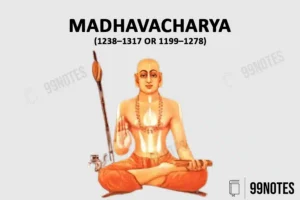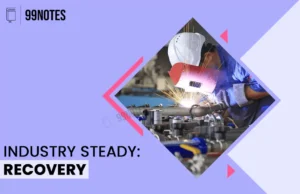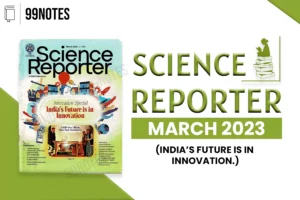22 May 2023 : Daily Current Affairs
DAILY CURRENT AFFAIRS
22-May-2023
Daily Current Affairs For UPSC ,Daily Current affairs of The hIndu and Indian Express.
1. Stalemate over sharing of Krishna water to continue.
Topic: GS2 – Federal issues
Context:
- The sharing of Krishna River water between Telangana and Andhra Pradesh remains unresolved, and the stalemate is expected to continue in the next water year.
Issue:
- Telangana has refused to accept the 34:66 water-sharing ratio imposed on it since the bifurcation, emphasizing that judicious sharing of river water was a vital aspect of the Statehood movement.
- Telangana claims entitlement to a 70% share of the 811 tmc ft allocated to the combined Andhra Pradesh by the KWDT-I Award, but the allocation was made in a 512:299 tmc ft ratio in favour of Andhra Pradesh without considering the in-basin requirements of fluoride and drought-affected areas in Telangana.
- Andhra Pradesh is diverting around 300 tmc ft of water from the allocated 512 tmc ft to areas outside the Krishna Basin, which violates the KWDT-I Award’s preference for in-basin needs.
- Telangana has refused to comply with the orders issued by the Krishna River Management Board without its consent, leading to the matter being referred to the Ministry of Jal Shakti.
2. Understanding a human pangenome map
Topic: GS3 – Science & Tech
Basic definitions:
- A genome is the collection of all genes and regions between genes in our chromosomes, and it determines our genetic makeup.
- Genome sequencing is determining the precise order and arrangement of nucleotides in a genome.
- A reference genome is a map that newly sequenced genomes are compared to, helping to understand differences and variations between genomes.
Issue:
- The reference genome map considered a significant scientific breakthrough, was first created in 2001 and has been refined and improved since then.
- The reference genome map was not representative of all human diversity and had gaps and errors.
- A pangenome map, unlike a linear reference genome, is a graph that represents genetic diversity among multiple individuals.
- The pangenome map includes sequences from 47 individuals representing various ancestries and populations.
- Long-read DNA sequencing technologies were used to create contiguous chromosome maps in the pangenome project.
- A complete and error-free pangenome map helps understand genetic differences, human diversity, and genetic variants associated with health conditions.
- The pangenome map has already led to the discovery of new genes linked to autism.
- The current pangenome map does not include genomes from specific populations, such as Indians.
Future pangenome maps that include high-quality genomes from Indians can aid in mapping Indian genomes, understanding disease prevalence, discovering new genes for rare diseases, and developing improved diagnostic methods and drugs.
3. What is the ‘Open Network for Digital Commerce’?
Topic: GS3.
Issue:
- The Open Network for Digital Commerce (ONDC) is a government initiative in India aimed at transforming the e-commerce market from a platform-centric model to an open-network model.
- It is inspired by the success of the Unified Payments Interface (UPI) project, which allows seamless transactions across different payment platforms.
- The ONDC aims to enable buyers and sellers to transact across different e-commerce platforms, breaking down the current silos and reducing the dominance of a few large platforms.
- The government has ordered companies to list themselves on the ONDC platform, but major e-commerce players like Amazon and Flipkart have been reluctant to join.
- Advantages: Supporters believe that the ONDC will level the playing field, address dominance and high commissions issues, and make private platforms less relevant.
- Critics argue that sellers already have the freedom to list their products on multiple platforms, and buyers already shop across platforms. Therefore, they question the need for an open network.
- The government’s ability to develop an efficient alternative to existing e-commerce platforms will be tested as ONDC is rolled out.
- Challenges include listing products from various sellers and maintaining the quality of services available to consumer
The impact of ONDC on the e-commerce market and its success in democratizing e-commerce remains to be seen.
4. After sugar, it is time to regulate how much salt is being consumed.
Topic: GS3.
Issue:
- Excessive salt intake harms the human body and is a leading cause of non-communicable diseases.
- The World Health Organization (WHO) has set a global target to reduce salt intake by 30% by 2025, but progress has been slow.
- Implementing sodium-reducing policies could save an estimated seven million lives globally by 2030.
- WHO recommends measures such as reformulating food to contain less salt, controlling sodium procurement in public institutions, promoting low-sodium food choices, and raising awareness through media campaigns.
- India lacks a national policy on salt reduction, but voluntary measures exist. However, awareness among the general population is low, and salt content is not mandatorily labelled.
- Excess salt consumption has been linked to atherosclerosis, even in the absence of hypertension, in a study from Sweden.
- Salt awareness campaigns have been conducted globally, including in India, by organizations like WASH and Sapiens Health Foundation.
- The U.K. has successfully reduced salt consumption by gradually reducing salt content in bread, resulting in the prevention of strokes and cardiovascular events.
- Salt reduction in the diet is cost-effective and can help control non-communicable diseases. India should prioritize salt reduction to improve the quality of life and prevent strokes and heart attacks.
5. India, U.S. to hike technology cooperation; co-production of jet engines on the table
Topic: GS2 – IR , GS3 – Science & Tech
Context:
- India and the U.S. are discussing the co-production of jet engines, long-range artillery, and infantry vehicles under the Initiative on Critical and Emerging Technologies (CET).
Issue:
- Some high-technology initiatives are expected to be announced during Prime Minister Narendra Modi’s upcoming visit to the U.S.
- The launch of INDUS-X, promoting partnerships between defence innovation ecosystems, is scheduled in Washington under the CET.
- The 17th meeting of the India-U.S. Defense Policy Group (DPG) discussed defence industrial cooperation, military-to-military cooperation, and cooperative activities in the Indian Ocean Region.
- Focus was given to enhancing defense-industrial cooperation, including technology partnerships, long-term research and development, and supply chain security.
- Collaboration on jet engines for India’s future indigenous jets was discussed, with General Electric competing with Safran and Rolls-Royce.
- If a deal is announced, India will become the fifth country capable of making jet engines, sending a message to China about the deepening relationship between India and the U.S.
- Previous attempts at co-developing a jet engine have faced obstacles due to U.S. domestic legislation.
For Enquiry

22 May 2022 : The Editorial

22 May 2023 : The Hindu Editorial

20 May 2023 : PIB

20 May 2023 : The Hindu Editorial

20 May 2023 : Daily Current Affairs

Madhavacharya (1238–1317 or 1199–1278)

Industrial Infrastructure UPSC

Chapter 9: Industry Steady: Recovery

Science Reporter: India’s Future is in Innovation.

19 May 2023 : PIB
The Hindu 22 May 2022 : The Editorial The Hindu Editorial
22-May-2023
Daily Current Affairs For UPSC ,The Hindu Editorial Summary
Facebook-f
Twitter
Youtube
1.Marriage…
The Hindu 22 May 2023 : The Hindu Editorial THE HINDU EDITORIAL
22-May-2023
Daily Current Affairs For UPSC ,The Hindu Editorial Summary
Facebook-f
Twitter
Youtube
1. Delhi’s…
PIB 20 May 2023 : PIB PRESS INFORMATION BUREAU
20-May-2023
Daily Current Affairs For UPSC ,The PIB ( Press Information Bureau…
The Hindu 20 May 2023 : The Hindu Editorial The Hindu Editorial
20-May-2023
Daily Current Affairs For UPSC ,The Hindu Editorial Summary
Facebook-f
Twitter
Youtube
1. Among…
Daily Current Affairs 20 May 2023 : Daily Current Affairs DAILY CURRENT AFFAIRS
20-May-2023
Daily Current Affairs For UPSC ,Daily Current affairs of The hIndu…
evaluation of the rajput states upsc Madhavacharya (1238–1317 or 1199–1278) Madhavacharya was born in a Brahmin family in the Udupi district of Karnataka.
Madhavacharya propounded…
Infrastructure Industrial Infrastructure UPSC Infrastructure is the set of provisions that serve a country, city, or other area. It encompasses…
Economic Survey Chapter 9: Industry Steady: Recovery Synopsis
The Indian industry is central to the Indian economy, contributing to about 30% of the total…
Science Reporter Science Reporter: India’s Future is in Innovation. Article 1: Make Education more creative:
Context:
India is home to the world’s largest youth population….
PIB 19 May 2023 : PIB PRESS INFORMATION BUREAU
19-May-2023
Daily Current Affairs For UPSC ,The PIB ( Press Information Bureau…


